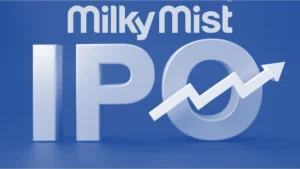Any American who has been around long enough to taste a slice of “government cheese” can tell you that. While the phrase sounds surreal, and is often used as a derogatory shorthand for any form of welfare, the original concept of government cheese lives on today in a very literal way. Unbeknownst to many, the United States currently stockpiles somewhere in the range of 1.4 billion pounds of cheese in cold storage caves hundreds of feet below the ground, mainly in Missouri. That’s a lot of cheese. What’s it doing there and how did it get there? The story of government cheese is nearly a century old and it all starts with … well, a bit too much spilt milk…
The 20th century was a roller coaster ride for everything dairy. At the height of the Great Depression, it was the farming industry that was hit the hardest. Dairy farmers, who had seen their incomes drop by two-thirds, resorted to destroying their own milk, ceremoniously dumping gallons of it in the street in a desperate attempt to boost prices by reducing supply. The New Deal was then enacted to help Americans from all walks of life, particularly in rural America – and one of the products of it was the Commodity Credit Corporation, or CCC, a government-owned corporation with the power to buy agricultural products at great scale, to help farmers and keep food prices stable. By the 1940s, everyone felt a lot better about drinking milk, as homes across the country adopted the modern convenience of the household refrigerator, bringing refrigerated pasteurized milk to the masses. Still, the government’s attempt to support rural America was continued long after the Great Depression, buying up surplus storable dairy products off the open market — butter, cheese and nonfat dry milk — at support prices through the Commodity Credit Corporation.
By the early 1970s, there was a domestic dairy shortage and as a result, prices shot up. The energy crisis sent food prices soaring – and sent President Jimmy Carter looking for a way to bring them down. Among other measures, Carter enacted a massive, $2 billion (in 1970s money!) subsidy for the dairy industry and it suddenly became very profitable to produce milk. By the time the 1980s rolled around, farmers had produced way too much of it, which was then turned into way too much cheese. Government cheese.
The CCC was there at the ready to buy up all that the farmers would sell them. And what’s a cheese-rich government to do? Give it away, packaged in easily distributed five-pound blocks. Some of the government cheese was distributed to food banks, while some was used for school lunches (if you ever had a cheeseburger in a public American school in the late 1970s or early 1980s, you probably had a slice). More was delivered to needy seniors as part of food parcels and still is to this day.But all of this cheesy goodness could not last. The Reagan years brought in a conservative trend in American life – and a campaign to roll back agricultural subsidies and get people to stop eating government cheese, both figuratively and literally. The public turned sharply against government cheese when “Agriculture Secretary John R. Block showed up at a White House event with a five-pound block of greening, moldy cheese and showed it to the press. “We’ve got 60 million of these that the government owns,” he said. “It’s moldy, it’s deteriorating … we can’t find a market for it, we can’t sell it, and we’re looking to try to give some of it away.”
Instead, the dairy farmers, rather than having their product directly subsidized by the government, were set to become beneficiaries of a federally-supported advertising campaign, much like the one created for Florida orange juice and other citrus products.
So, where were these brand-new government ads for non-government cheese? Well, America’s Dairy Farmers, the beneficiaries of the ad subsidies, had a different question to present to the nation. That question, famously, was, Got milk?
Source:- E dairy news



